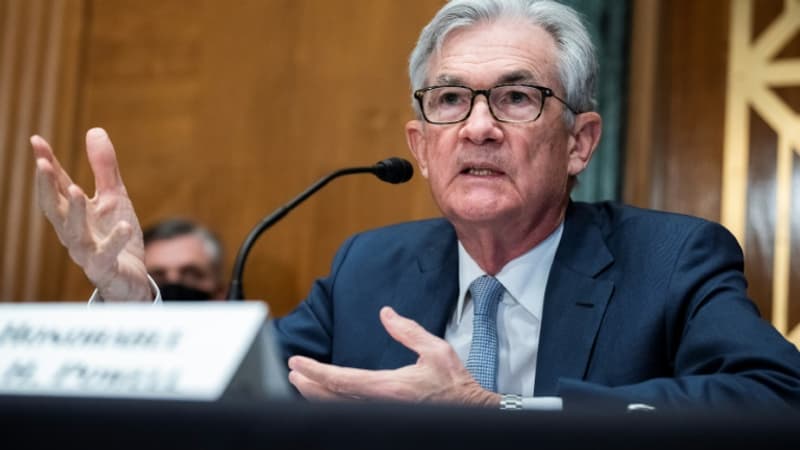Fed interest rates are now expected to rise more slowly, but the fight against inflation is far from over, according to the central bank chief, who also hinted that a soft landing for the economy was still “highly plausible.” “The time to slow rate hikes could come at the December meeting,” US Federal Reserve Chairman Jerome Powell said in a speech at the Brookings Institution in Washington on Wednesday.
Next Fed meeting on December 13 and 14
The episode of increases in the reference interest rate of three-quarters of a percentage point, well above the usual quarter of a point, and which had not been used since 1994 before June, could therefore soon come to an end. The next Fed meeting is scheduled for December 13-14.
The Fed chairman was also more optimistic than a few weeks earlier about the health of the US economy in the coming months. Thus, he estimated that a “soft landing”, which would bring inflation back to heel without plunging the United States into recession, is “very plausible”, when he had explained, at the beginning of November, the result of the Monetary Committee (meeting of the FOMC), that the path to get there had narrowed. These comments charmed Wall Street and immediately sent the Nasdaq jumping more than 3%.
“Inflation is still too high”
However, the president of the powerful institution warned that the job was far from over: “inflation is still too high,” he remarked. He noted that the PCE inflation index, the Fed’s favorite barometer and whose October figures will be released on Thursday, is expected at 6.0% year-on-year, slightly down from 6.2% in September. The other inflation index, the CPI, which serves as a reference and is used to index pensions, slowed to 7.7% year-on-year in October, from 8.2% in September.
“Low months in the data are often followed by rebounds,” however, warned Jerome Powell. Therefore, the monetary policy committee, the decision-making body of the Fed, anticipates “that further increases will be appropriate,” he warned. Rates are “likely” to stay high “for a while,” he also warned. Jerome Powell, for his part, did not specify to what level it would be necessary to increase these one-day rates, which are currently in a range of 3.75 to 4.00% after starting from zero at the beginning of the year.
A regional Fed chair advocates a final rate below 5%
The previous Wednesday, another Fed official, Governor Lisa Cook, had also considered that “smaller steps would be prudent”, stressing that after the rate hikes already carried out, “the impact of monetary policy would take time”. She had not ventured to specify what the ideal rate to achieve would be: “we will only know over time by observing how the economy evolves”, she had limited herself to indicating.
One of his colleagues, James Bullard, president of the St. Louis Fed, also a voting member this year of the Monetary Committee, had estimated on Tuesday that that final rate should be at 4.9%, which implies new increases.
Stronger growth and an unemployment rate that looks stable
The Fed has been raising the cost of money since March to fight high inflation in the United States. Before the next meeting, Fed members will have had at their disposal the latest unemployment figures, due to be released on Friday. The unemployment rate is expected to remain stable in November, at 3.7%, with a slowdown in job creation.
Hiring in the private sector slowed sharply in November, even posting the biggest slowdown in nearly two years, according to the monthly ADP/Stanford Lab survey released Wednesday. As for GDP (gross domestic product) growth in the third quarter, it was a little stronger than initially announced, at 2.9% at an annualized rate, according to a second estimate also published on Wednesday.
Source: BFM TV


